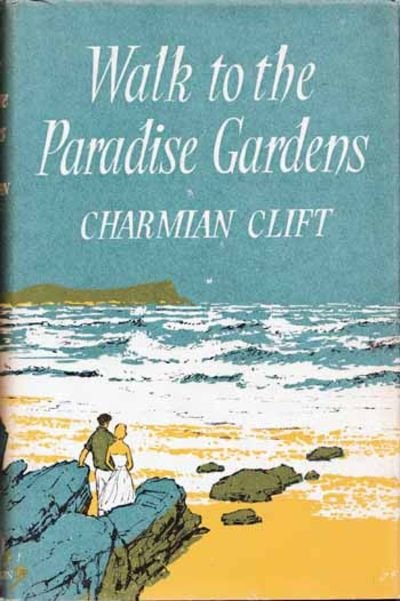Walk to the Paradise Garden
Walk to the Paradise Gardens is available from Ligature Publishing. Click here to purchase.
After Clift completed Peel me a Lotus, she ‘thought it was time for THE novel’ (she once told a newspaper journalist).
From the way the author said this, she made it sound as if the idea for her first solo fiction came to her out of the blue. In fact, she had been writing it — on paper and in her head — for years.
As early as 1951, when Clift had just arrived in London, she told her literary agent David Higham that her plans included a 60,000 word novel titled Walk to the Paradise Gardens. In mid 1954, she promised him that this book would be ready by the end of November. Instead, she and George went to Greece. But in 1957, after she sent off her second Greek island memoir, the time was right. Although the version of Walk to the Paradise Gardens on which Clift embarked at this time had a new plot and new characters, it was still firmly based in the microcosm of Lebanon Bay — the slightly fictionalised Kiama the author had been inventing since the days when she was a stormy adolescent scribbling in the sand dunes. More than setting or background, this place is the prime mover that drives the novel.
At the start of the story, urban sophisticate Julia Cant makes a reluctant visit to her home town in the company of her ambitious architect husband Charles, who has never previously been there. As Charles brings the car to a sudden halt on the hill that overlooks the township, he realises that his wife must have had this place in her head, all the time he has known her.
‘How could you carry it about with you for so long? All those funny round hills bumping about under your hats... that enormous quantity of sea battering endlessly behind your eyes!’
Julia herself has so internalised the landscape that the sight of it is almost painful:
She felt that her eyes were bulging with the enormous pressure of the sea behind them. As if, literally, the neat, small, durable casing of her skull had expanded to contain all that was Lebanon Bay, perfectly preserved under its thin, radiant, dome-shaped cover of sky.
If the author’s portrayal of the physical landscape shows the deep sense of identification she felt with this place that she once described as ‘the centre of the world’, Clift simultaneously presented the social landscape of this Australian country town in all its petty snobbery and even cruelty.
Started at a time of high confidence, Walk to the Paradise Gardens was written over two years of economic hardship and professional rejection, so that it was April 1959 when at last Clift sent the typescript of THE novel to her agent.
Photograph L: Bombo Quarry, photograph taken 2019
Photograph R: first edition cover of Walk to the Paradise Gardens

